15/9/2015: I’ve updated this post with better drawings and a better explanation of how micellar water works.
Micellar water is taking off in a big way, with a bottle of Bioderma’s Sensibio H2O Micellar Water (formerly Crealine) sold every 6 seconds worldwide, and celebrity endorsements from Kylie Minogue and Gemma Ward. But what is micellar water and how does it work?
You may remember this post I did waaayyyy back about the science behind face washing, and the general principles are pretty similar, although this time my computer is down so you get treated to dodgy hand-drawn diagrams…
The story starts with handy molecules called surfactants. These have a hydrophilic end that’s attracted to water, and a lipophilic end that’s attracted to oils and grease. The hydrophilic end is also known as the “head” and the lipophilic end is also called the “tail”, for reasons that are hopefully obvious.
You know how oil usually floats on water with a clear line in the middle, and splashing water on your makeup doesn’t do much? Well, surfactant molecules can bring the oil and water worlds together so everything can be one happy family!
Surfactants are the most important ingredients in soap, shampoo, detergents and that sort of thing – they also happen to be good at making bubbles, so something bubbles up, there’s a good chance it contains surfactants. How they make oils/makeup soluble in water is summarised in this diagram (click the image to enlarge – if it doesn’t quite make sense, you can go back to the original face-washing post for a more detailed explanation):
So how do these surfactant molecules relate back to micellar water? A micelle is a ball-shaped cluster of a whole bunch of surfactant molecules, with the water-loving heads all around the outside and the tails pointing inwards in the middle, so they don’t have to be close to the water that they repel. Essentially, micellar water is just lots of micelle clusters hanging around in water.
Does this mean micellar water is pretty much just soapy water? Essentially, yes! The key difference though, is that not all surfactants are made equal – if you’ve ever washed your face with a standard bar of soap, you’ll know that surfactants can be skin irritants! Products like Bioderma Crealine H2O contain surfactants mild enough to be left on the skin without irritation (no rinsing required!), yet are strong enough to effectively remove makeup. Depending on the specific micellar water and your skin’s tolerance, you may or may not need to rinse with water afterwards.
What’s all this about a cotton pad? Cotton is much like water – it’s hydrophilic, and hydrophilic things like other hydrophilic things. So when you splash some Crealine H2O on the pad, all the heads of the surfactant molecules stick to the cotton like so, which leaves all the oil-loving tails poking up like a furry, oil-sucking shag carpet:
Then when you wipe it over your skin, the tails grab hold of the makeup and oils. Since the little tails can only grab onto so much oil, it’s quite likely that you’ll need to go over your face a few times, especially if you’re wearing heavy makeup.
My verdict: I’ve found that Crealine H2O doesn’t work quite as well at removing waterproof makeup as my usual two-phase makeup removers (e.g. Garnier Clean Sensitive 2 in 1 Make-Up Remover, with the distinctive blue oil-on-water look). It takes quite a few goes for me to get my makeup off, to the point where my face tingles a bit from the cotton pad (although it may been the roughness of the pads I’m using). It might be because my face is quite oily, and the layer of oil and makeup is thicker than usual (there’s also a version for oily skin (Sebium H2O) which may suit my skin better). On the plus side, Crealine H2O doesn’t leave my skin feeling greasy at all! It’s a very handy substitute for facial wipes for when you’re on the go, and don’t have a sink for washing your face properly.
Other popular micellar waters
- Simple Micellar Cleansing Water (review here)
- Garnier SkinActive Micellar Cleansing Water
- La Roche-Posay Micellar Water Cleanser
- Vichy Pureté Thermale 3-in-1 Micellar Water
Bioderma Crealine H2O is available in both 100 mL ($19.95) and 250 mL ($29.95 – recently discounted by 25%) bottles, and is available in selected pharmacies, or online at Amazon or Adore Beauty. For full stockist info visit Cosmetiques De France.
This post contains affiliate links. This product was provided for editorial consideration, which did not affect my opinion. For more information, see Disclosure Policy.
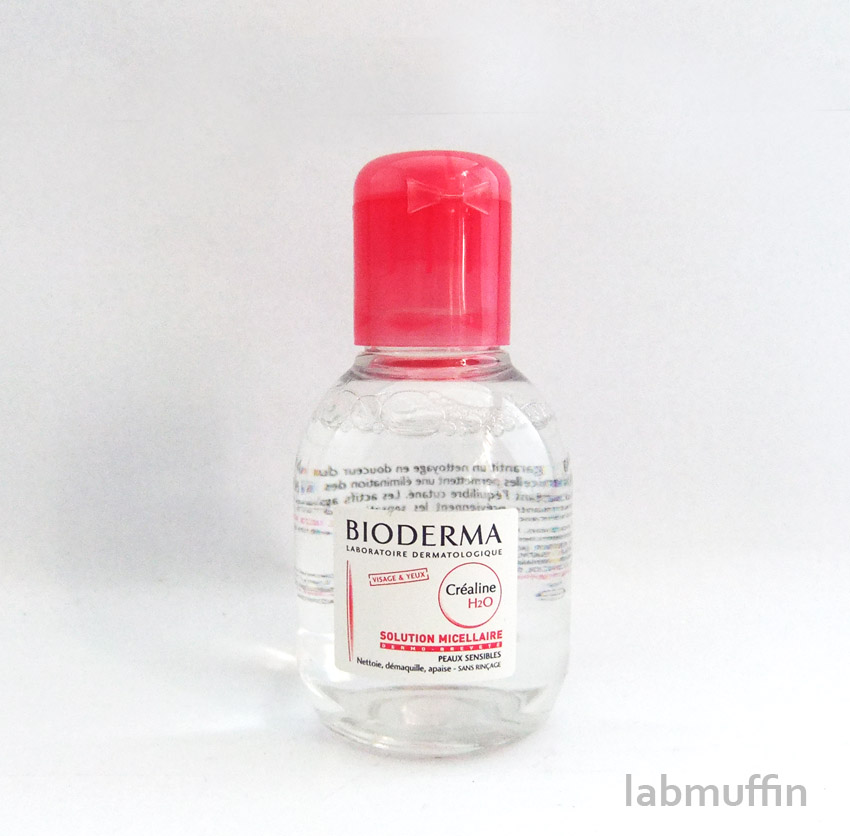
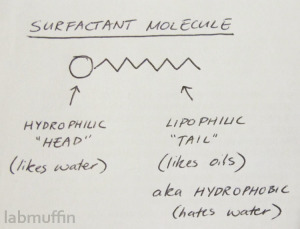
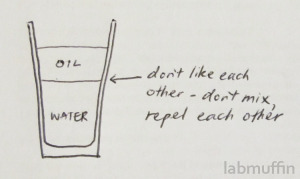
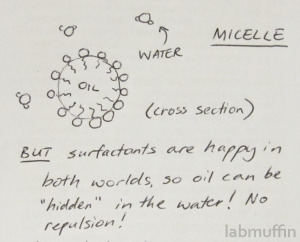
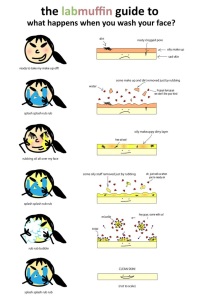
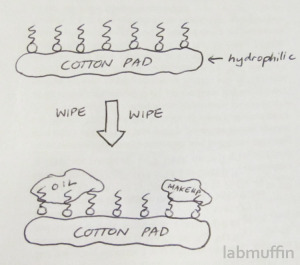
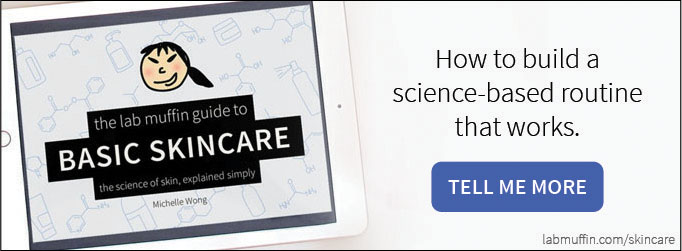
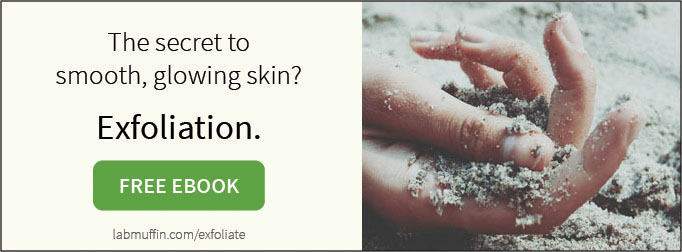
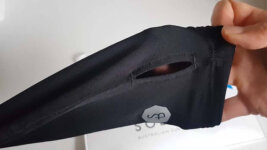

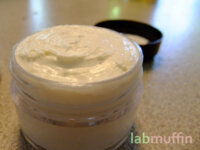
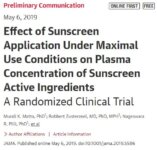
Wow, such an informative post! Love the simplicity of your diagrams – I’m the least sciencey person ever and I’m glad I finally understand how this stuff works. Now I feel motivated to go wash my face :/
Glad you liked it! I’m convinced that no-one is truly “non-sciencey”, they just didn’t have a teacher whose style suited them 🙂 Gonna science you up!
Amen to that!! I am not science inclined, but that is only because I never used it after getting out of school, and after so many years, it is kind of embarrassing to see how much I have forgotten.
I have been looking for a simple, easy to understand, with not too many science names, way to explain this, and all the ones that I found read like an advance biology book.
Not everyone knows some of the terms used there, so instead of helping understand the concept they left me even more confused and frustrated.
Coming across your page was like a miracle! You should go to the Wikipedia page and add your explanation, or at the very least place a link to this page, so those like me who cannot understand half of what is written there, can at least get something out of it, rather than just feeling dumb and stupid.
I do remember that I used to hate math until we got this amazing teacher who explained in a way that actually made sense!! After that I loved math! It was easy to understand and I enjoyed that there was a formula to the madness and for the most part you could always understand it if you could solve the formula.
So YES!! Science is one of those things that is better understood if the person teaching knows their stuff and looks for different forms to teach the subject, or is willing to explain it in lame terms! THANK YOU FOR THIS!
Thank you so much for your kind comments! I’m so glad you’re enjoying my blog 🙂
Hi! So what do you think about some miscellar water products containing polyaminopropyl biguanide (PHMB), which causes cancer?
Here you have a couple of articles about it:
http://kemi.taenk.dk/bliv-groennere/banned-and-potentially-cancer-causing-substance-still-found-personal-care-products
http://cphpost.dk/news/danish-drugstores-withdraw-products-suspected-of-being-carcinogenic.html
Its carcinogenic activity isn’t all that convincing tbh, here’s the report from the EU committee: http://ec.europa.eu/health/scientific_committees/consumer_safety/docs/sccs_o_157.pdf It’s discussed from page 45, PHMB was only carcinogenic at 750 mg/kg on the skin, which is not an amount that would be relevant since it’s only used at 0.3% max in cosmetics.
Very nice explanation of micelle, Michelle, love the illustration! I used Bioderma Crealine H2O as a toner, which was quite refreshing, but not strong enough as remover. It runs into danger of thinking I’ve removed the makeup but instead have an skin outbreak end of the week, happens so often! =)
Thanks Ann! It’s not strong enough for me either, I’m just too oily I’m afraid. The Crealine line is supposed to be for sensitive/intolerant skin, which mine is not – I accidentally exfoliated 4 times in one night recently, and instead of reacting, my skin was glowing the next day!!
I loved the science behind this! Thanks M xx
Thanks Chels 🙂
Thanks for the info! I am hooked on micellar waters 🙂
They’re definitely a handy product to have around!
I was initially under the impression that this would be good to remove my makeup quickly, say if I had a late night out and wanted to get to bed. But I’ve found like you, I have to go over my face a lot to remove it all, and to be honest I just don’t feel comfortable not having removed all my makeup. Cleansing a couple of times is actually quicker. So i never find myself reaching for this.
Great review! Loved the scientific explanations and the diagrams!
Cally
I think Crealine H2O and us oily skinned gals just aren’t meant to be 🙁 Glad you liked the explanation though!
I love the diagrams and explanation! I think my mind has been opened to using an argan oil before soaping up. It makes so much sense with your explanation. Plus, I just completed a lab on micelles and CMC. I love when chemistry I am using intersects with real life :)) yay for science!
It’s amazing where my chemistry knowledge has come in handy – almost always in unexpected places! Glad it made sense to you 🙂
This was such an awesome post 🙂 I love how well your diagrams explained it!
Thanks! So happy that my explanation makes sense 🙂
Always love your little diagrams and the added ‘science-y stuff’ factor. What can I say? I’m a tech head, science is just rad 🙂
Thank you 🙂
This guide is super-cute and very informative!!!
Thank you very much for this article! – Now i have to browse through all your articles…
Greetings, Carina
Brilliant! You have a new fan!
Why is this product NOT readily available in the Good’ol USA? Not counting online sales of course. I see that popular brands like Garnier and L’oreal make the Micellar Water (curious to know how to pronounce Micellar??), yet you do not see it in USA pharmacies… what gives??
I honestly don’t know – for some reason the French pharmacy brands haven’t expanded to the US, even though some can be found in Canada (I guess maybe because of the French-speaking population) and Australia (don’t ask me why).
Awesome info and thanks for posting it. Brains and beauty in the one package 🙂
Thanks so much for this incredibly helpful post that’s so easy to understand.
I recently reviewed a micellar product and included a link to your post for anyone wanting to know more about micellar. Just wanted to let you know : )
(The post is here – http://littlewhitetruthsblog.blogspot.com.au/2016/01/essenzza-fuss-free-naturals-micellar.html)
Thank you! Loved this post, very well-written 🙂
And the Bioderma Micellar water is 30 dollars in the US??? that’s like 26 euros!! I’m really really glad it’s like 9 euros here in France, or I would not buy it ^^
Haha yeah, French skincare is suuuuper pricey in Australia and the US! I hauled hard when I went to Europe.
You did a great job of simply, but effectively explaining how Micellar water works.
I wrote a review about what happened when I used Micellar water, but I included a link to your post because you explain it so well 🙂
Thank you!
Wow! It’s July 2016 and I’ve only just come across this Miscellar stuff now? What rock have I been hiding under??
I do use waterproof eye makeup though (mascara and eyeliner), which I’ve no intentions of swapping for non-waterproof, so if Miscellar doesn’t work so well at removing that, I’ll stick with using my old fashioned homemade cold cream, which is basically just an emulsification of beeswax and rose water with a preservative.
Yeah, it kind of defeats the purpose of ‘oil free’, but it does a reliably admirable job of removing all things waterproof and leaving my skin dewy soft, so until a Miscellar-type product comes along that can also remove waterproof makeup without being either harsh or oily, I’ll save my money and stick with making my own cold cream (plus it doubles as a fabulous skin protector and moisturizer in cold winter months).
great info Michelle! so grateful to have found your blog
I absolutely LOVE Micellar water to remover my water proof make up! However, I have developed and eye infection that has lasted 6 months so far, my eye doctor is doing his best- I am now on oral antibiotics as I had to stop using the steriod eye drops that DID help! I wondered if this water may have caused it. Possible? I sure HOPE NOT. Thanks, Chrissie
It’s possible that the micellar water could have weakened your eye’s ability to resist infection, but I think it’s unlikely that it caused it to begin with!
I’m not into makeup but I get the idea and might make use of this in the future. Thanks for sharing this.
Hi – this is a great blog! I’m a colloid chemist and know a bit about this stuff. Sadly, the industry has latched onto yet another sexy-sounding scientific term and used it to sell products at a premium that have always be sold anyway. You can make your own micellar water at home in seconds. Take a gallon of water and add a drop of dish detergent. That’s it! Or lather up some bar soap over a sink full of water. Notice that bluish color that the water takes on? That’s light being scattering by the tiny micelles of soap molecules.
You’ll get micelles, yes – but the reason that the storebought versions will probably work better is because they use milder surfactants that aren’t usually used in other products, so you don’t need to rinse afterwards 🙂